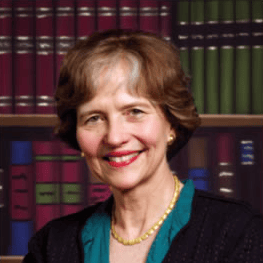I have recently had e-mail correspondence with an Indian chemical engineer who wrote me because of a comment I had made in a general introduction to the modern history of India.1 In the book’s first chapter, an overview of the centuries of Turko-Afghan and Mughal dynasties, I had noted that the rulers in this period, who were of Muslim background, had no program whatsoever of mass conversion. Indeed, for the rulers, the forms of ritual, and the transmission of sacred knowledge on the part of their subjects, were, in fact, matters of indifference. (The political loyalty of their leaders was not.) This comment is unexceptionable to professional historians but it flies in the face of colonialist and indeed nationalist stereotypes about “despotic” and “fanatic” Muslims.
My correspondent cited an older secondary source that confirmed his viewpoint. I tried to explain to him the status of different kinds of sources and the challenge of interpreting them. In a later exchange, I suggested a few titles that he might enjoy reading that illustrate the use of primary sources and that counter the stereotypical accounts of Muslim rulers. (One of my suggestions was the marvelous Somanatha by this year’s new Honorary Foreign Member of the AHA, Romila Thapar.)2 It’s been a few weeks since I’ve heard from him, but in his last note he signed off in style, asking whether I agreed with him that history was too important to leave to historians. All I could say in reply was that I felt quite confident that he, in fact, would not want to entrust some challenging problem in chemical engineering to me.
My answer was somewhat disingenuous. History may in some ways be primarily the purview of professionals, but it is also an intimate part of personal identity and a critical element in social belonging. It is learned in multiple dimensions of everyday life. Scholarly publications, and arguments communicated in a variety of settings by professional historians are, at best, only one source of anyone’s convictions about the past. This is because arguments from history become justifications for, and explanations of, public policy and public life more generally. My correspondent, the chemical engineer, bases his views of Muslims on history. I argue back that in postcolonial India, the Muslim citizens of India have suffered grievously in part precisely because of faulty misapprehensions about the past.
The same tension informed the remarkable “miniconference” on same-sex marriage at this year’s annual meeting in San Diego. As one of the presenters put it in relation to judicial proceedings, lawyers on one side argue from “history and tradition”—the very phrase insisting on fixity—while historians demonstrate that marriage, far from being a stable institution, has changed dramatically over time and has been capacious enough to include an enormous variety of relationships. Every time that the definition and shape of legitimate marriage have been challenged, proposed changes were perceived as destructive of the very institution itself and of the social order built upon it. Objections to the lifting of the ban to inter-racial marriage, illegal in some states within the lifetime of some of us, took precisely this form.
We also learned that historians’ role on issues of family law, whether as expert witnesses or signatories to amicus curiae briefs, is substantial enough to constitute a history of its own. Two AHA members, George Chauncey and Nancy Cott, are serving, as I write, as expert witnesses on behalf of the lawyers arguing the unconstitutionality of the ban on same sex marriage in California that resulted from an electoral referendum in 2008 (known as “Proposition 8”). Cott in her initial testimony underlined the multiple and shifting purposes of marriage in America and, memorably, pointed out the potential of a reversal of Proposition 8 in further encouraging the historical role of marriage as a resource “for stability and social growth.” Chauncey’s testimony focused on the disturbing history of discrimination against gay Americans over the last century in the context of America’s history of civil rights. A federal district courtroom, like the meeting rooms in San Diego, can be a site of serious intellectual communication.
The AHA Council, inspired by this year’s sponsorship of a miniconference, hopes to continue its efforts to highlight historians’ work as a resource in public life. As announced elsewhere in this issue, a miniconference on the topic “Religion, Peace, and Violence,” held during the 2011 annual meeting in Boston will address questions like those raised by my Indian correspondent. Council members are hoping to build on the San Diego experience to do even more to engage journalists and others in the substance of the historical work presented at our annual meetings and in our work more generally.
This is all for the good but it still leaves me with the problem of my correspondent, the chemical engineer, whose views run counter to much of what we know about Indian history. Similarly outdated views in his field would lead to failed syntheses or worse. But how can we make this clear? First, of course we need to be modest. History does not tell us what to do about ethnic stereotypes or same-sex marriage or anything else. But an analytical examination of the past illuminates the frameworks of our perceptions, and helps us see the origins of present predicaments more clearly. Maybe, a clear exposition of documentary evidence will make my correspondent reflect and reexamine his views, if not change them. Meanwhile, let the San Diego experience inspire us in our workplaces of all kinds—and please wish me well in persuading this enthusiastic engineer to become acquainted with the historical standards and approaches we all aspire to.


